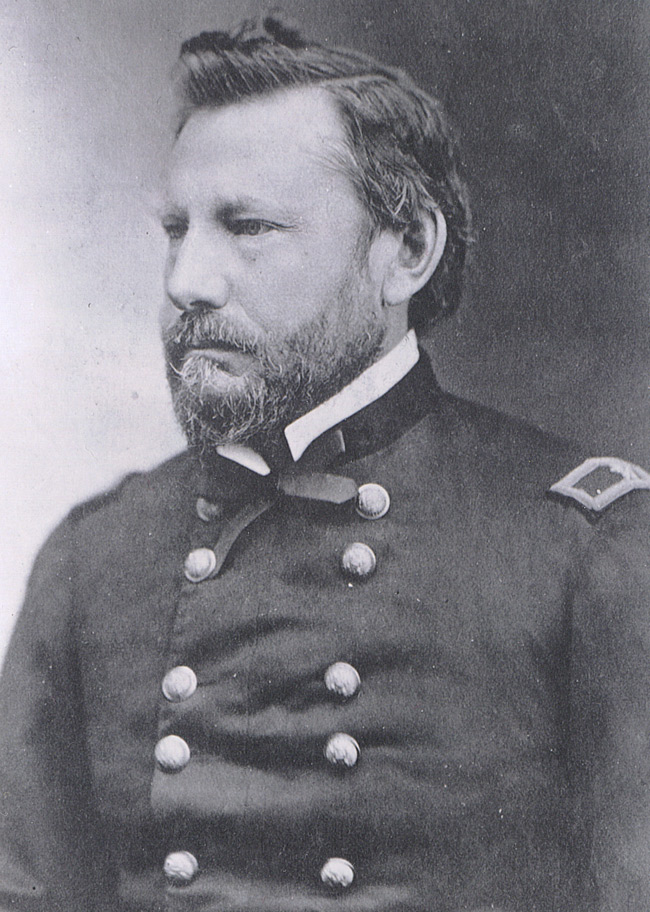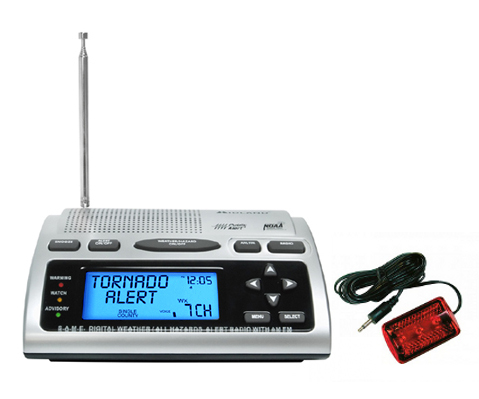 |
| Matthew Brady’s portrait of General Albert J. Myer, the first Chief Signal Officer of the weather division of the U.S. Army Signal Corps. |
Did you know that the National Weather Service’s earliest leader was a medical doctor from the Army—General Albert Meyer? In the early 1860s, Dr. Meyer led the then Signal Service – which later evolved into the National Weather Service (NWS) of today. Meyer led the development of the Signal Service for the purpose of communicating weather warnings in a way that equally informed the deaf and hearing-abled.
Technology has changed a lot since then. Despite today’s tech savviness, NWS forecasters recognize that human-to-human interaction remains central for understanding how the public receives and interprets life-saving information -- this includes the deaf and hard of hearing community.
Steve Pfaff, Warning Coordination Meteorologist (WCM) in Wilmington, NC, works closely with the local deaf community to better understand their weather concerns and needs. He was invited into the community by the NC Division of Services Deaf and Hard of Hearing (DSDHH) Regional Center in Wilmington, where he talked with leaders of the local deaf community and his DSDHH partner, Christina Bauman. DSDHH is a Weather-Ready Nation Ambassador.
Christina says, “The collaboration with NWS will not only allow us to continue to provide this vital information to the [deaf and hard of hearing community], but to do so in a manner which will be mutually beneficial [to us and NWS].”
Steve and Christina work together with emergency managers to provide support for this community. While technological advances are helpful, there remains a need to have direct contact with all types of communities in order to understand their needs -- and to put things in place to meet them.
For example, the traditional NWS guidance for lightning safety “When Thunder Roars, Go Indoors!” doesn’t necessarily relate to the deaf and hard of hearing community. The deaf don’t actually hear the “roar”; they instead feel the rumble of thunder – and oftentimes earlier than the hearing-abled notice the sound.
This information has percolated to NOAA headquarters to lightning expert Charlie Woodrum and lightning outreach lead, Donna Franklin. Charlie adds, “Feedback from the deaf and hard of hearing community on the lightning safety campaign has been welcomed and informative in ensuring that NOAA’s outreach is effective for all populations. Regardless of whether you can hear the thunder, feel the rumble, or see the lightning, everyone is encouraged to help promote lightning safety and it’s great to see this community being proactive in this area of exploration."
 |
| NOAA Weather-Radio with an adaptor for the deaf and hard of hearing |
A central hub of NWS activity has been anchored by Trevor Boucher and Jennifer Saari, Meteorologist Interns at the Weather Forecast Office (WFO) in Nashville, TN, and Huntsville, AL, respectively, where they created a “Deaf and Hard of Hearing Outreach Team” known as DaHHOT. DaHHOT began due to an overwhelmingly positive response in the hearing loss community to SKYWARN trainings and severe weather workshops. Public-private partnerships have helped to provide NOAA Weather Radios with accessible strobe light and pillow shaker attachments for attendees of their workshops. The DaHHOT team now consists of several WFOs across the country and they share successes and challenges, and provide guidance for areas that have both large and small hearing loss populations.
The National Weather Service’s engagement with the deaf and hard of hearing community brings the agency full circle with Dr. Meyer’s mission of making warnings and advisories effective for the deaf – not just the hearing-abled. Though technology is society’s go-to resource for communicating, Steve says, “outreach and education must work in tandem with technology and science” to truly build a Weather-Ready Nation.
Over the next few months, Steve is rolling out a Weather-Ready Challenge, which is a series of seminars and open houses for the deaf and hard of hearing community. The seminars will include information about beach hazards, winter weather, hurricanes, and severe weather. Participants who complete the series will be honored in recognition ceremony next September. This is “Building a Weather-Ready Nation” in action!
For More Information
Weather Safety for Deaf and Hard of Hearing - Learn about adaptors available for NOAA Weather-Radio
Wireless Emergency Alerts FAQ - Wireless Emergency Alerts are emergency messages sent by authorized government alerting authorities to your mobile device. Messages include a special tone and vibration, both repeated twice
NOAA ASL Water Safety video: https://www.youtube.com/watch?v=Yx2oYj4FD4U